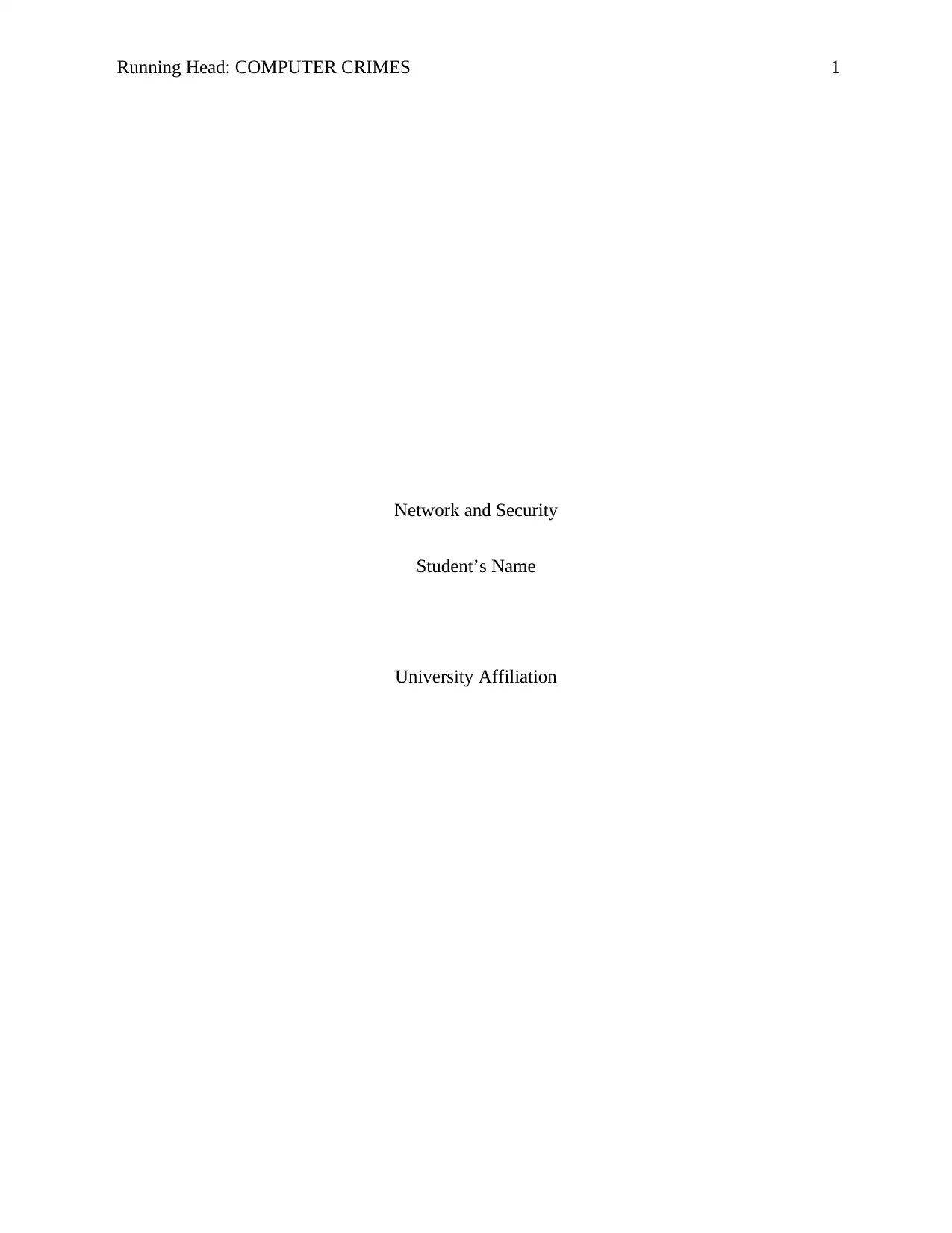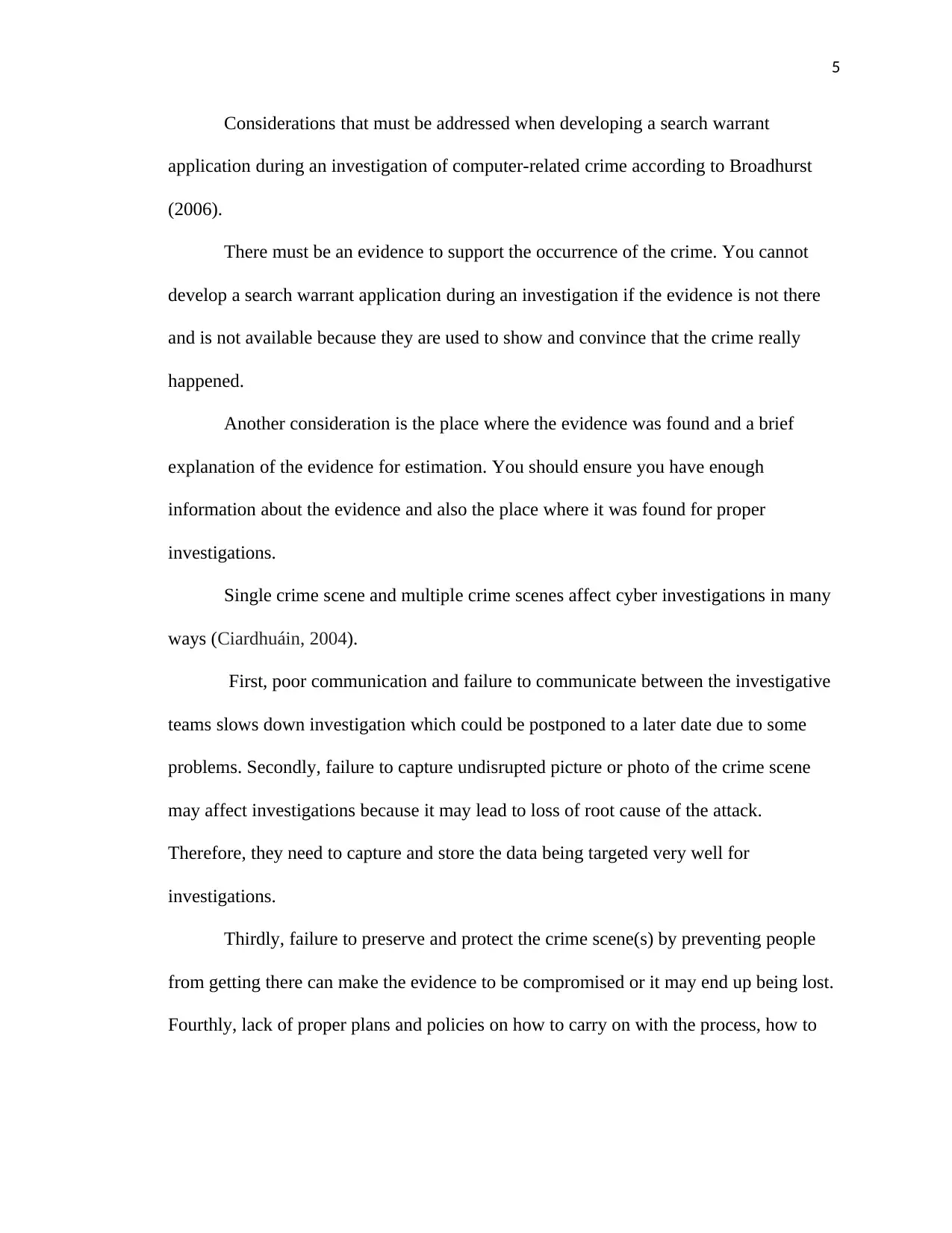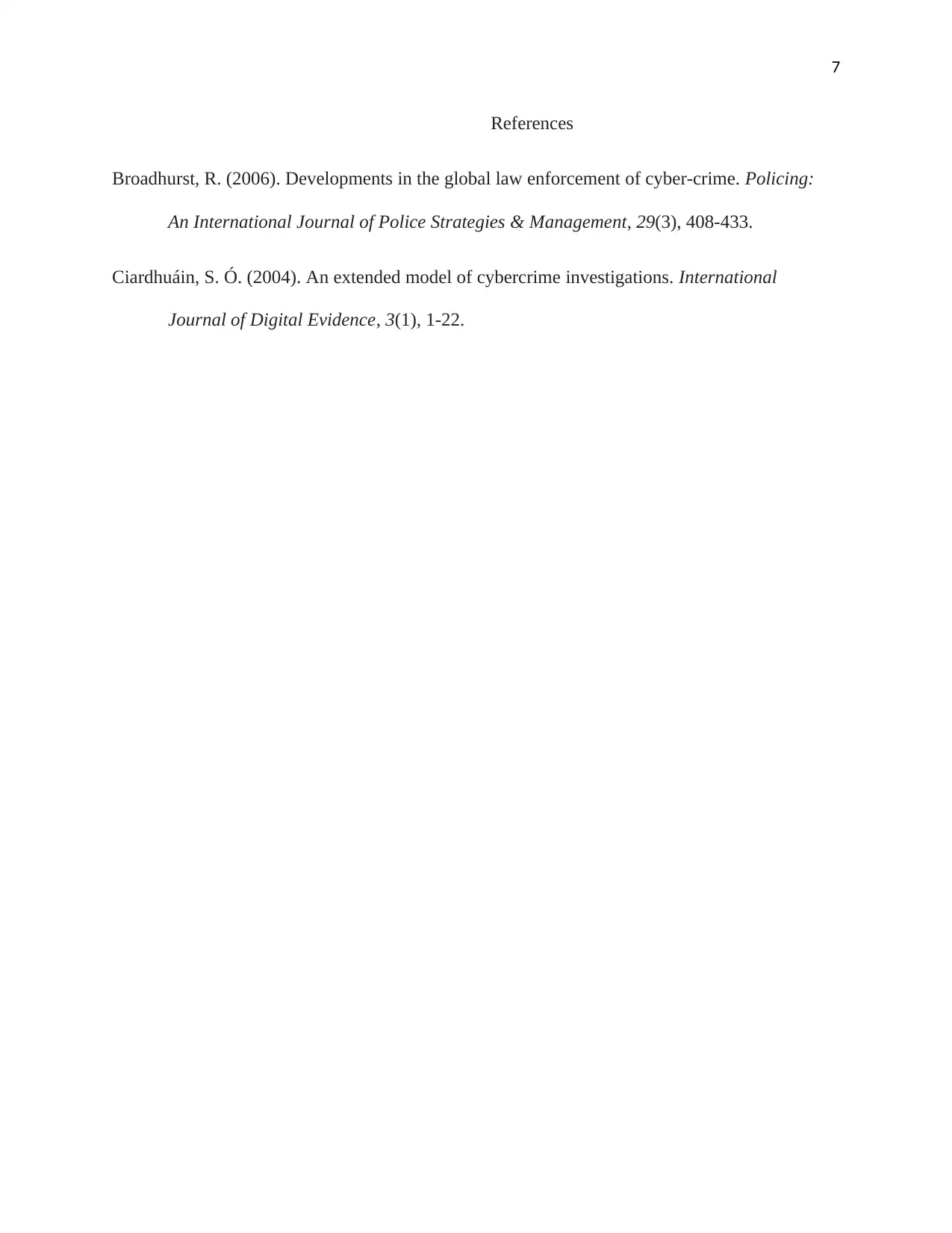HSM 438: Challenges & Solutions in Local Computer Crime Investigation
VerifiedAdded on 2023/05/30
|7
|774
|390
Discussion Board Post
AI Summary
This discussion post addresses the challenges local law enforcement and municipalities face when investigating computer crimes, such as a lack of resources and recognition of the severity of these crimes. It highlights key components for improving investigative response, including increasing the number of experts, adopting high technology like GPS and multiagency task forces, and using honey ports to understand attacker tools. The post also considers the development of search warrant applications, emphasizing the need for supporting evidence and proper documentation of crime scenes. Furthermore, it examines how single and multiple crime scenes affect cyber investigations, focusing on issues like communication failures, evidence preservation, and the importance of well-defined plans and policies for evidence collection and handling. The content references established works in the field, providing a comprehensive overview of the complexities involved in investigating computer-related crimes and is available on Desklib for students.
1 out of 7













![[object Object]](/_next/static/media/star-bottom.7253800d.svg)